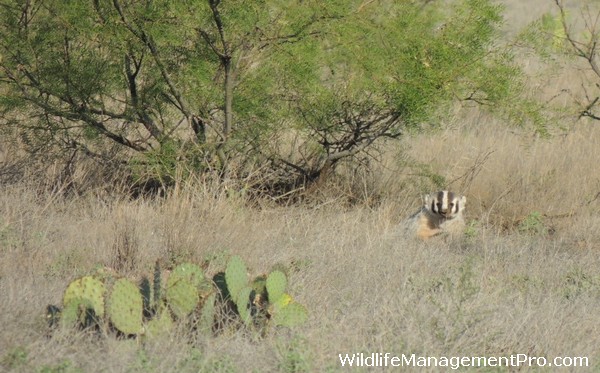Landowners are increasingly interested in wildlife and habitat management for native plants and animals. This is good because private lands and plant communities are becoming more and more fragmented, making it difficult to meet all of the needs of an animal on a single property. There are three essential ingredients of good wildlife habitat, and without them, wildlife can not exist. Food, cover and water are essential for all wild animals.
Food for Wildlife – Landowners interested in habitat management should first examine the plants on their property. Pay particular attention to the amount and distribution of trees, crops, brush and grass. Plant composition and structure largely determines the types of animals that can live on a plot of land. Plants are producers, the bottom of the food pyramid, and are needed by consumers (animals). Plants are not only used for food, but as for cover. They are critically important.

Cover for Wildlife – Cover is essential for all wild animals, but cover can come in many forms. Both natural and man-made cover provide nesting, roosting, screening and foraging areas. Natural plant cover is managed by planting, thinning, burning, or even removal. One of the best methods to meet wildlife cover requirements is simply allow vegetation to grow wild – do not mow it or attempt to make it look park-like! We as humans like well manicured areas. Animals love diverse areas with lots of different plants. The weeds many of us try to control are actually required by wildlife for food and cover.
Water for Wildlife – Everything needs water, both plants and animals. Pay attention to water sources in areas that managed for wildlife. The wildlife found in any area will have varied water requirements. Turkey and bobwhite quail get most of the water they require from plants, but will need surface water only during long dry periods. Many insect-eating songbirds will need water daily. Water is often a limiting factor for animals, so the development of a spring, pond or wildlife-friendly trough will often become the hub of animal activity on a property.
Wildlife Habitat Management – The interspersion of food, cover and water is important to developing wildlife habitat. Many wildlife species will not use areas which are too far from water or adequate cover. Maintaining plant diversity should be the primary objective of any landowner interested in wildlife habitat management. A variety of native plant species will provide an abundance of varied foods within complex structure for wildlife to nest, rest, roost and hide.